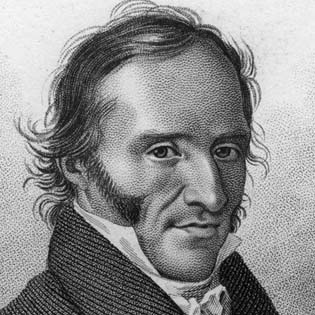 Georges Cuvier was an early French biologist, a contemporary of Jean-Baptiste Lamarck. Lamarck, unfortunately, died before Cuvier and ended up vilified in a famous eulogy by his younger, very influential peer. That speech is attributed to having marginalized Lamarck’s influence on evolutionary theory. Cuvier didn’t believe in evolution. That was almost 200 years ago. Only now is Lamarck’s name emerging with respect in the discussions of biologists.
Georges Cuvier was an early French biologist, a contemporary of Jean-Baptiste Lamarck. Lamarck, unfortunately, died before Cuvier and ended up vilified in a famous eulogy by his younger, very influential peer. That speech is attributed to having marginalized Lamarck’s influence on evolutionary theory. Cuvier didn’t believe in evolution. That was almost 200 years ago. Only now is Lamarck’s name emerging with respect in the discussions of biologists.
Lamarck hypothesized that the environment can influence evolution in a single generation, compelling the emergence of nonrandom characteristics and environment-influenced features. Darwin shared this view, devoting the last years of his life in search of an explanation for the process that Lamarck proposed. How despised was Lamarck? Darwin rarely mentioned in his writings Lamarck’s name or even the names of Darwin’s contemporaries that shared Lamarck’s positions. Darwin felt he could explore their ideas if he did not cite them.
Darwin and Wallace’s theory of natural selection emerged as a paper in 1858. Darwin’s Origin of Species appeared a year later, and “survival of the fittest” was embraced with astonishing speed. It was a theory that complemented and enhanced the principles behind the industrial revolution. The natural world looked to mirror the world of men. Darwin was a hero.
Lamarck is the boogie man of biology circles. “This is what can happen to you if you don’t swim with contemporary theory, don’t make the right friends or if you think of things too soon,” suggests this story of the brilliant theorist ignored. Darwin was tormented by the possibility that his theory of natural selection would bring down scorn. He waited almost twenty years to publish. Then, Darwin was haunted by the possibility that his pluralistic inclinations embracing additional theories of evolution would not be understood. While distancing himself from contemporary Lamarckians, Darwin shared many of their beliefs. Even Darwin’s genius accompanied by the adulation of many of his peers was not enough to protect him from a sizeable portion of this work being rejected and ignored.
Cuvier did not believe in evolution, but he shared the insights that he experienced behind his pioneering observations that there are relationships or patterns connecting the physical structures of species. He had the thoughts of a creationist but the heart of a biologist. He saw connections everywhere he looked. It was Lamarck that insinuated the element of time, a violation that Cuvier could not tolerate.
As a blogger, not a biologist–a web developer/activist, not an academician–I can wander freely about, displaying leaps of logic without fear of retribution or marginalization by my peers. I can experience an idea and share it on these pages in just the way an artist can be struck by a metaphor and put it to paper as an illustration or a cartoon. I was a comic panel and strip artist for several years.
So, let’s draw ideas!
As noted in my last entry (Autism Family History), because a mother’s testosterone level rises with her age and because she has children across the whole arc of her reproductive years, then we might observe a display of personality and physiological features in her children that would roughly reproduce human evolution over a span of eons.
If matrifocal and patrifocal social structure reflect physically the hormonal manifestations characteristic of a matrifocal high-testosterone female, low-testosterone male in the first case; and a patrifocal low-testosterone female and high-testosterone male in the second case, then perhaps we can observe in the skeletal remains of our evolutionary precursors evidence of evolving social structure.
Are there, for example, dental correlations between the just mentioned physiologically contrasting social structures and/or familial family arcs? Neoteny has dental correlations, with smaller teeth being characteristic of the neotenous smaller jaw. Watching teeth grow smaller over millions of years, might researchers find that they have grown larger in males the last few tens of thousands of years as patrifocial social structure has taken hold? Are the teeth of males from older mothers smaller than the teeth of males of first-born, young mothers? Is it reversed for females?
In a large family, do the male’s teeth erupt later and later, females earlier and earlier?
Are there height correlations, particularly in the relative length of the legs and arms to the body, suggesting evidence of neoteny in our contemporaries or the fossil record? Leg length has emerged as a possible marker for neoteny when noting bonobo/chimpanzee comparisons. The maturational delayed often reach puberty later, providing a longer time for the legs to lengthen. Note that primary hypogonadism (abnormally low testosterone production) results in disproportionately long legs and arms. Does just low testosterone also prolong the limbs?
Do conditions that display maturational delay, such as autism, Asperger’s and stuttering, display longer limbs or smaller teeth? Perhaps there is a correlation noting the reverse. Maybe as we go back in time, we will find that teeth grow larger, with perhaps that less intuitive correlation emerging as a signature of increased maturational delay. What specifically are the correlations?
Cuvier was famous for maintaining an extraordinary work environment characterized by a host of working surfaces, each focusing on a different aspect of animal physiology. In my mind, these surfaces move about on wheels, often bumping into one another, mixing ideas and sharing patterns, compelling the emergence of understandings not obvious before.
Astonishingly right while remarkably wrong, Cuvier is an inspiration.
…
Proceed to author’s FREE book download on this subject (The book is called Evolution, Autism and Social Change). 10 minute introductory video here.
Andrew Lehman on 10/27/09 in Evolution, featured | No Comments | Read More

